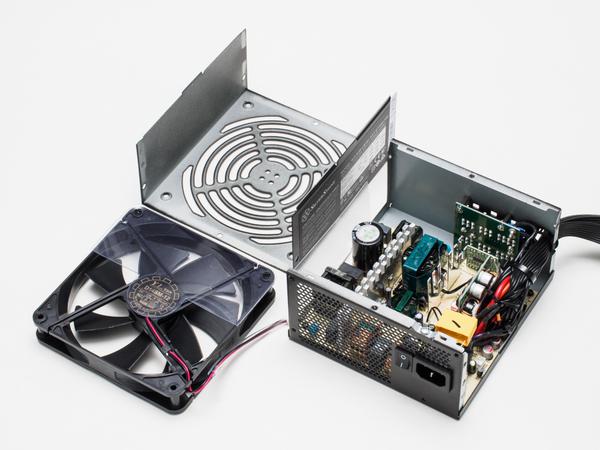Learn from SilverStone products, Ir...
11
04
Learn from SilverStone products, Iroha of choosing a power supply unit that can not be heard now
Speaking of home-built PCs, the merit is that you can choose your favorite parts from abundant choices and assemble your own one. Not only the flower-shaped parts such as CPU and video card, but also the ones that are directly related to the performance such as motherboard, memory, SSD, and the ones that affect the appearance such as PC case and light-up parts, the points to be particular about vary greatly depending on the person.
Among these parts, the power supply unit is important but not so much attention. To be honest, if you have enough capacity, it will have little effect on the performance and appearance of your PC, so many people may have chosen it based on price alone. However, even when choosing this power supply unit, there are many points to check.
In this article, for beginners who do not know how to choose a power supply unit, or for those who have not been conscious of choosing a power supply unit until now, we will introduce from the explanation of the basic part to the method of selecting a power supply capacity. Let's go.
First, let's know the contents of the label attached to the power supply unit.
Two keywords related to the performance of the power supply unit are "power supply capacity" and "80 PLUS". First of all, let's understand these two keywords that seem to be known but not surprisingly.
● "Power supply capacity" The power supply capacity is a numerical value that indicates how much power the power supply unit can output. The unit is "W (watt)".
The power supply unit has an important role of converting the AC 100V (AC input) of the outlet to the DC voltage (DC output) used in the PC. The maximum power that can be taken out after this conversion is the capacity of the power supply unit. Parts with high power consumption if not enough ... High-performance CPUs and video cards cannot be operated, so it is necessary to select an appropriate capacity.
It should be noted that PCs use four types of voltages: -12V, + 3.3V, + 5V, and + 12V, each of which has an output upper limit. How much power can be output is written on the label of the power supply unit, so let's take SilverStone's "SST-ET550-HG-Rev" with an output of 550W as an example.
The output label affixed to the power supply unit.In this way, the input, output, and power are described together.
The output is written in "DC OUTPUT", and the maximum value of the amount of current that can be passed at each voltage is described. By the way, "+ 5Vsb" is for standby power that keeps outputting even when shutting down. It is used for Wake On LAN (WoL), which turns on the power of a PC via a network, and for supplying power to a USB port.

Below that, "MAX. POWER" is the amount of electric power. Since the power is voltage x current, a simple calculation should be 66W for + 3.3V and 100W for + 5V, but when you look at the label, it just says "110W" in the middle. The other voltages are written individually, but why is only + 3.3V and + 5V different?
The reason for this is simple: "+ 3.3V and + 5V total 110W". Since these two voltages have the same conversion source, the limit is 110W, which is the upper limit of the conversion source.
For the same reason, the part written as "550W" at the bottom is smaller than the total power value of each voltage, but this is the maximum output.
Most of the power supplied to the CPU and video card is + 12V, which is the most important. SilverStone's "SST-ET550-HG-Rev" can output up to 540W out of 550W at + 12V, so it can be said that it is easy to use and can withstand sudden loads.
For reference, I will also introduce the labels of 650W and 750W of the same series. By the way, it is easy to misunderstand that it is a beginner, but the power capacity of each unit is the maximum amount of power that can be output, and it does not always consume this power. Some people may think that 750W consumes more power than 550W and 750W, but the conversion efficiency, which will be described later, is more related to power consumption.
The difference from 550W is that the output current of + 12V is raised from 45A to 53A.From this change, we can see that + 12V is emphasized.
At 750W, not only was + 12V raised to 62A, but + 3.3V and + 5V were also raised to 22A, respectively.
● "80 PLUS" certification "80 PLUS" certification ranks how much conversion efficiency can be output when a load of 20%, 50%, or 100% is applied. The higher the rank of the power supply, the better the conversion efficiency, and there is an advantage that unnecessary heat generation and power consumption can be suppressed.
The condition value of efficiency to be satisfied differs depending on the rank, and the lowest "80 PLUS Standard" is 80% or more regardless of the load, but the highest "80 PLUS Titanium" is 92% or more at 20% load, 50. A high level of 94% or more with a% load and 90% or more with a 100% load is required. In addition, only this Titanium has an additional condition that it is 90% or more with a 10% load.
Not only the power supply unit itself, but also the package has the "80 PLUS" logo mark. "SST-ET550-HG-Rev" is a power supply that has received "80 PLUS Gold" certification.
80 PLUS rank and conversion efficiency list.Efficiency conditions vary depending on the load, but in each case the efficiency at 50% load is the maximum.
The power conversion efficiency does not affect the performance of the PC, but it does greatly affect the power consumption.
For example, suppose you have a PC that consumes 300W of power. If the conversion efficiency is 100%, the power required to operate this PC is 300W, but if the conversion efficiency is 90%, 333W is required, and if the conversion efficiency is 80%, 360W is also required.
Where does this extra power go? Most of it is released as heat in the power supply unit. It is desirable that the conversion efficiency is high because it is not only wasteful but also may cause the temperature inside the PC case to rise.








